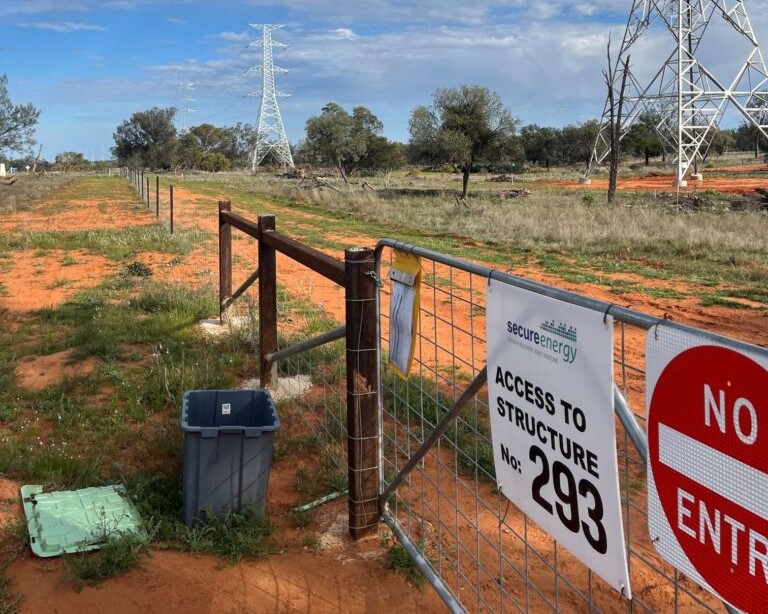New South Wales’ (NSW) workplace health and safety regulator SafeWork NSW is reportedly inspecting Project EnergyConnect construction sites in the state’s southwest after the Electrical Trades Union (ETU) claimed to have uncovered major safety breaches.
The ETU said that an inspection last week had exposed dangerous workplace practices and conditions at work sites associated with the EnergyConnect project, a 900-kilometre electricity interconnector that will link power grids in NSW, South Australia and Victoria.
The project is a joint venture between South Australian network operator ElectraNet and NSW provider TransGrid which, along with construction partner Elecnor, is building the 700km NSW section of the project.
The ETU said the breaches include non-compliant harnesses and first aid kits, poor food, water and sun safety, unqualified workers conducting electrical work, and no toilets. The union said workers were also having to deal with unreliable mobile-radio communications and inadequate first-aid procedures.
“The fact that the workplace health and safety regulator has boots on the ground to investigate should be ringing alarm bells to Elecnor and Transgrid,” ETU National Secretary Michael Wright said.
“Apart from being provided some hi-vis clothing and a vehicle, workers have largely been left to fend for themselves on the lines. Workers have been dodging falling objects, and wearing fraying and non-compliant harnesses. When something goes wrong, they’ve waited an eternity for help.”
Wright said the project has had a “horror track record” for the rights of workers and that the “unsafe working conditions are making it that much harder to attract the workforce we need to transition the nation to net zero.”
“This cannot be what the energy transition looks like,” he said.
A Transgrid spokesperson did not respond to the individual allegations but said in a statement the company took the safety of employees and contractors “very seriously.”
“Transgrid strives for best practice in all aspects of safety and as such, we drive continual improvement regarding safety standards to ensure they are above and beyond the required compliance levels,” the spokesperson said.
“Our safety systems, our people and their behaviours are supported by protocols that ensure anticipation and mitigation of any safety issues.”
Construction of the high-voltage interconnector is due to be completed in 2024, providing 800 MW of nominal transfer capacity in both directions, unlocking some 5.3 GW of new renewable energy projects.
This content is protected by copyright and may not be reused. If you want to cooperate with us and would like to reuse some of our content, please contact: editors@pv-magazine.com.









By submitting this form you agree to pv magazine using your data for the purposes of publishing your comment.
Your personal data will only be disclosed or otherwise transmitted to third parties for the purposes of spam filtering or if this is necessary for technical maintenance of the website. Any other transfer to third parties will not take place unless this is justified on the basis of applicable data protection regulations or if pv magazine is legally obliged to do so.
You may revoke this consent at any time with effect for the future, in which case your personal data will be deleted immediately. Otherwise, your data will be deleted if pv magazine has processed your request or the purpose of data storage is fulfilled.
Further information on data privacy can be found in our Data Protection Policy.